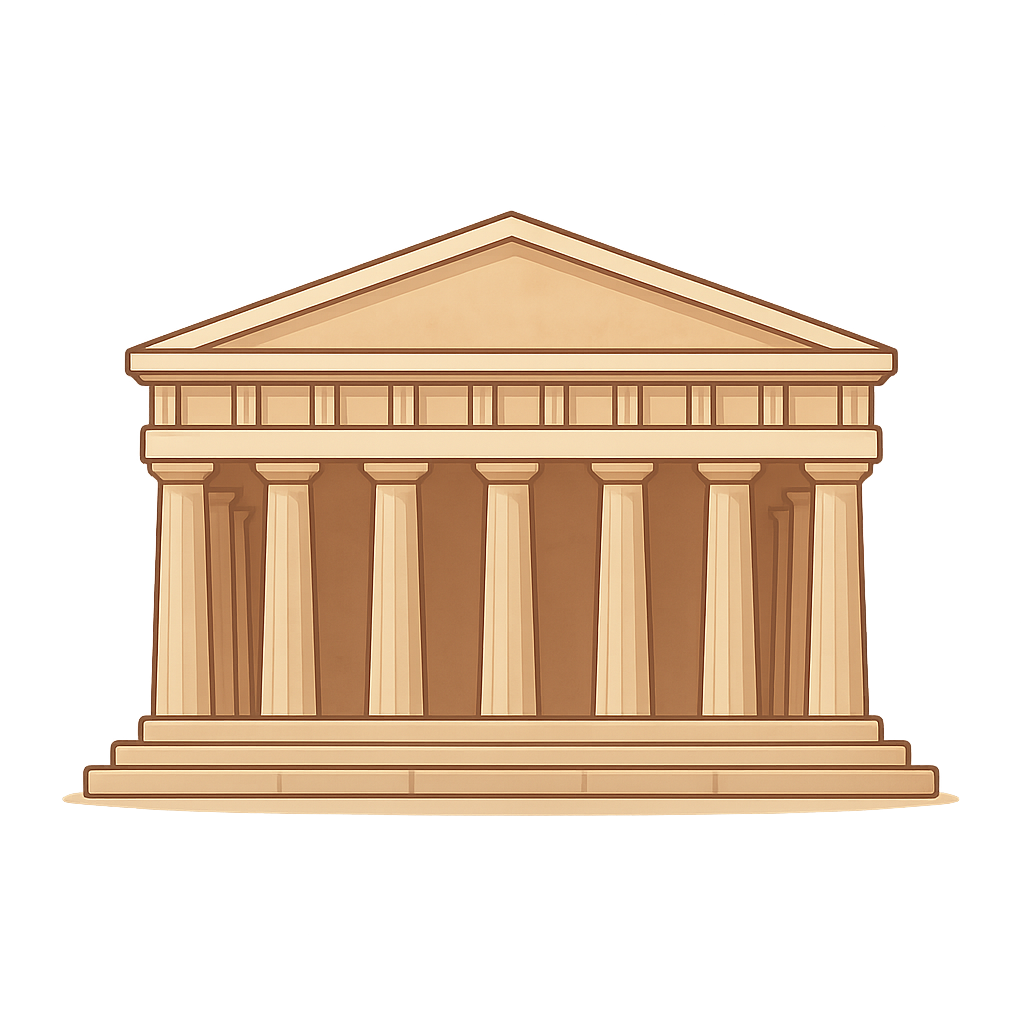The Stone Giant on the Hill
I stand high on a rocky hill, a crown of sun-bleached marble watching over a busy, modern city. My strong columns have held up the bright blue sky for more than two thousand years. The warm Greek sun feels like a familiar blanket on my stones, and the wind whispers secrets to me that it has gathered from centuries of travel. Below me, the city of Athens hums with life, a sprawling world of cars and buildings that is so different from the world I was born into. From up here, I have seen empires rise and fall, and I have watched generations of people look up at me with wonder in their eyes. I am an ancient giant made of stone and stories. Do you know who I am?
I am the Parthenon. I was not built simply to be a beautiful building; I was created as a magnificent gift for a very special goddess, Athena, the wise and powerful protector of Athens. It all began with a great leader named Pericles. Around 447 BCE, he had a grand dream to make Athens the most glorious city in the entire world. He wanted me to be its crowning jewel, a symbol of the city's power and its devotion to its goddess. To make his dream a reality, he hired a brilliant sculptor named Phidias. Inside my walls, Phidias created the most breathtaking statue you can imagine. It was a giant figure of Athena, standing tall and proud, shimmering with polished ivory for her skin and pure gold for her armor and robes. She was the heart of my existence, a shining beacon for all who entered.
Building me was a tremendous challenge that required thousands of skilled people working together. For fifteen long years, from 447 to 432 BCE, stonemasons, carpenters, sculptors, and laborers worked tirelessly under the hot sun. My architects, Iktinos and Kallikrates, were like math magicians. They knew that if they built my columns perfectly straight, they would look skinny and curved from far away. So they cleverly made each column bulge slightly in the middle and lean inward just a tiny bit. They even made my floor curve upward in the center so that it would appear perfectly flat. These tricks made me look strong, balanced, and perfect to the human eye. Giant blocks of pure white marble were cut from a nearby mountain and carefully hauled up my hill. Then, sculptors carved incredible stories into my sides, turning me into a giant storybook in stone that told tales of gods, heroes, and epic battles.
My life has been very long and full of changes. I have stood for more than 2,500 years, and I wasn't always the quiet ruin you see today. For nearly a thousand years, I was a temple dedicated to Athena. But as times changed, so did I. I became a Christian church, and later, when new rulers came to Greece, I was turned into a mosque with a tall minaret. I have survived powerful earthquakes that shook my very foundations and watched wars rage in the city below. My most painful memory is from 1687, when a terrible explosion during a battle blew my roof off and shattered many of my walls. Though parts of me were lost forever that day, my spirit was not broken.
Even in my old age, with scars and missing pieces, I am so much more than a pile of ancient stones. I am a symbol of powerful ideas that were born in the city I watch over. I stand for democracy, the idea that people have the power to rule themselves. I represent wisdom, the gift of my goddess, Athena. And I am a monument to the amazing things people can create when they work together with skill and imagination. Every day, visitors from all over the world climb my hill. They come to learn from my story and to be inspired by a beauty and strength that has lasted through the ages, reminding everyone of what humans can achieve.
Reading Comprehension Questions
Click to see answer
